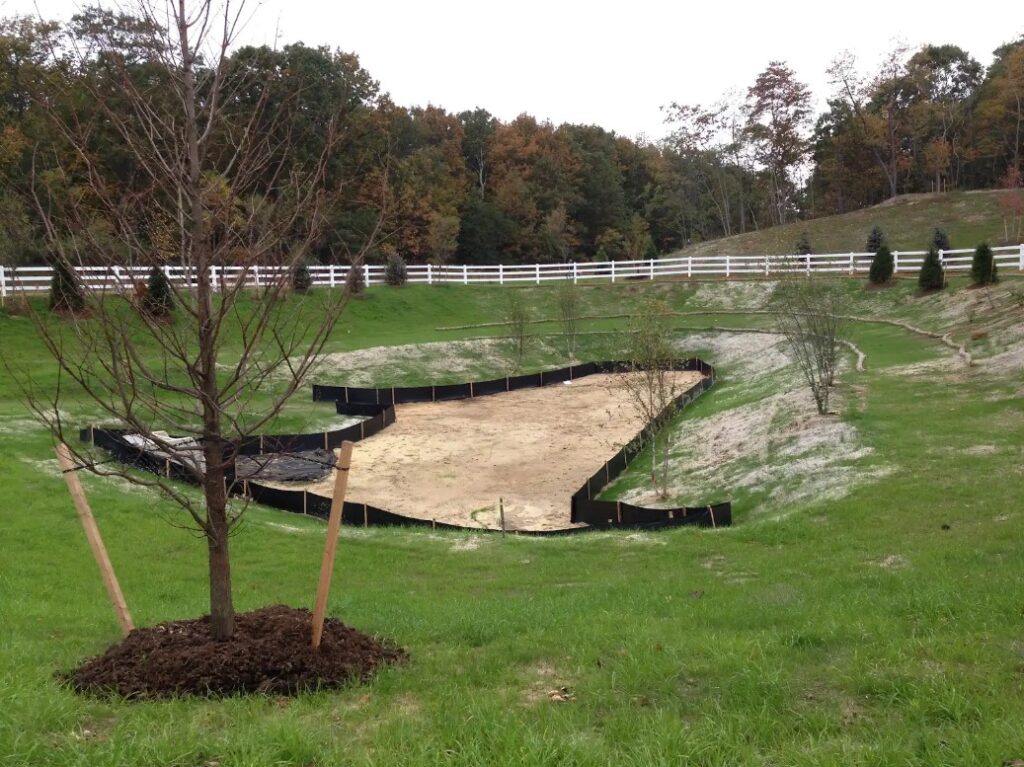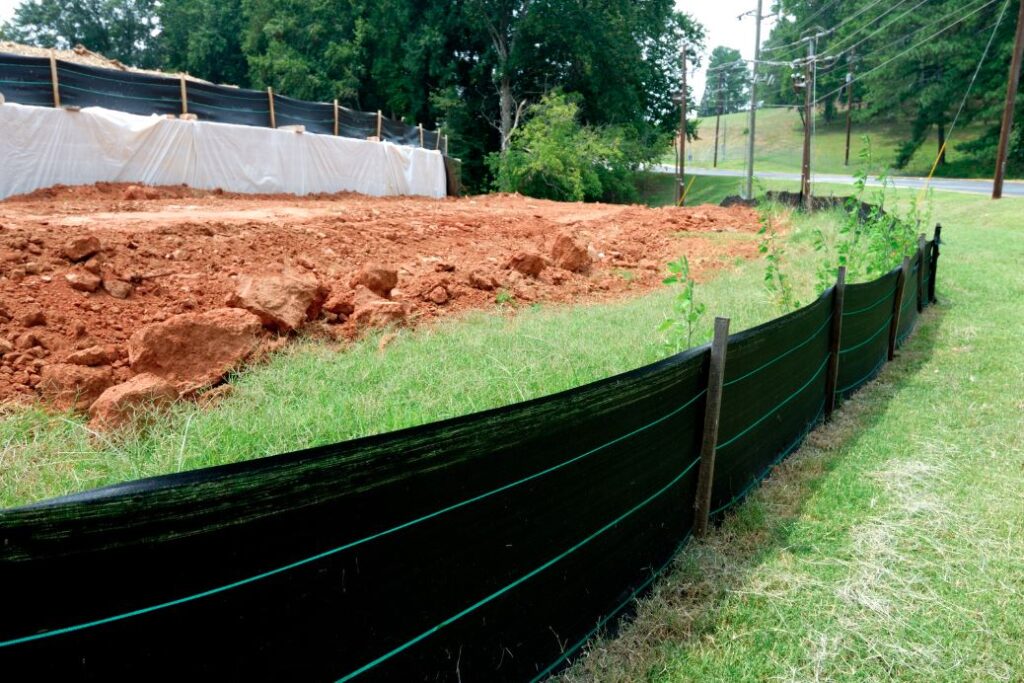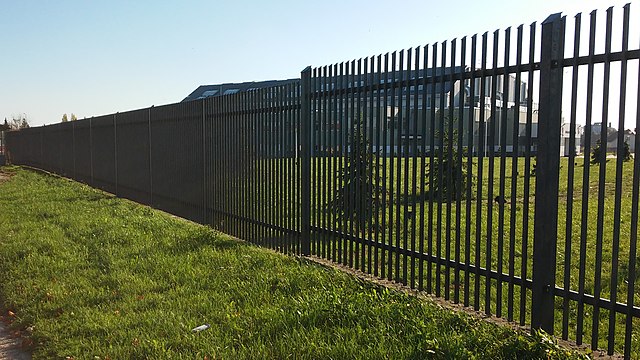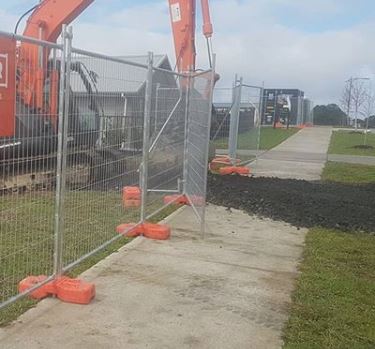Erosion control is a major aspect of construction activities, especially in New Jersey where frequent rain events can cause problems on job sites. Construction industry professionals understand how sediment control impacts NJ projects.

Get A Silt Fence Quote
Construction silt fences help maintain site integrity by preventing sediment runoff during rain events. Here’s how to effectively integrate them into your overall erosion control strategy, and valuable insights into maintaining them throughout the construction lifecycle.
The state of New Jersey has regulations surrounding sediment control, so construction professionals should understand what they are required to do and provide for compliance purposes. If you’re a construction manager, jobsite foreman, material procurement professional, residential builder, or part of HOA administration in New Jersey, understanding the importance of silt fences in construction is key to ensuring a successful and sustainable project.
Construction Silt Fences in NJ
A construction silt fence is a temporary barrier made of permeable fabric that is installed on construction sites to control sediment runoff. These fences are strategically placed to intercept and slow down the flow of stormwater, allowing sediment particles to settle before the water leaves the site. By capturing sediment, silt fences help maintain the integrity of the construction area and prevent soil erosion, which is necessary for the success of your projects.
Regulatory Compliance
In New Jersey, erosion control regulations are stringent to ensure the protection of the environment and public health. Complying with local, state, and federal guidelines is not just a legal requirement but a best practice for responsible construction. The New Jersey Department of Environmental Protection (NJDEP) provides detailed guidance on erosion control measures, including the installation and maintenance of silt fences. Failure to adhere to these standards can result in significant consequences, such as fines and project delays, impacting both the timeline and budget of your construction project.
Environmental Impact
Silt fences protect waterways and ecosystems from sediment pollution. By preventing sediment-laden runoff from entering nearby water bodies, these barriers help maintain water quality and support aquatic life. The long-term benefits of effective erosion control go beyond compliance; they contribute to community health and safety by reducing the risk of flooding and maintaining the natural landscape. Implementing silt fences in your projects not only meets regulatory requirements but also demonstrates a commitment to environmental stewardship and sustainable construction practices.
Installation Best Practices
Proper installation of silt fences is key to their effectiveness. In New Jersey, call Eastcoast Site Work for all your silt fence needs, from supplies, to expert installation. Outside of our service area, follow these step-by-step best practices to ensure success:
- Site Preparation: Clear the installation area of debris and vegetation.
- Trenching: Dig a trench along the desired fence line to bury the bottom of the silt fence fabric.
- Positioning: Place the silt fence into the trench, ensuring it is taut and upright.
- Anchoring: Backfill the trench to anchor the fence securely, and use stakes or posts for added stability.
- Sealing: Make sure there are no gaps between the fence and the ground.
Common pitfalls to avoid include placing the fence on uneven ground, failing to bury the fabric, and neglecting to ensure proper tensioning. Proper anchoring and tensioning are crucial to prevent the fence from collapsing or failing during heavy rain events.
Integrating with Other Erosion Control Measures
Silt fences are most effective when used in combination with other Best Management Practices (BMPs). These can include hay bales, erosion control blankets, and sediment basins. Each of these measures can address different aspects of erosion and sediment control, creating a comprehensive approach. For example, hay bales can provide additional sediment filtration, while erosion control blankets can stabilize slopes. Integrating these practices as part of your overall erosion control plan ensures a robust defense against erosion and sediment loss, protecting both your site and the surrounding environment.
By considering these factors and integrating silt fences effectively, you can create a sustainable and compliant erosion control strategy that safeguards your construction projects from the damaging effects of erosion and sedimentation.
Maintaining Silt Fences Throughout the Construction Lifecycle
Regular Inspection Protocols
Regular inspections are a fundamental part of maintaining silt fences. It’s important to have a plan for how often these inspections should occur and what they should entail. Typically, inspections should be conducted weekly and after any significant rain events. During these inspections, look for common issues like tears in the fabric, sediment buildup, and signs of undermining. Addressing these problems promptly will ensure the silt fence remains effective throughout the construction project.
Responding to Severe Weather Events
Severe weather events pose a significant challenge to the effectiveness of silt fences. Before heavy rain or storms, reinforce the fences by adding extra stakes or securing the fabric more tightly. After the storm, conduct thorough inspections to identify any damage and make necessary repairs. Ensuring the continued effectiveness of silt fences during adverse conditions will protect your site and minimize disruptions to your construction jobs.
Long-term Considerations
As your construction project nears completion, it’s time to think about transitioning from temporary to permanent erosion control solutions. By installing shrubbery, trees and vegetation before silt fences are removed, it gives them time to get established while still preventing erosion on the site. Once the need for the silt fence has passed, carefully remove it and restore the site to a natural condition. This is how you’ll meet regulatory requirements while working toward better sustainability and success of your construction project landscapes.
Maintenance Practices
Routine maintenance is key to the ongoing effectiveness of your silt fences. Tasks such as clearing debris, repairing damages, and re-tensioning the fabric should be part of your regular maintenance schedule. Maintaining the integrity of the fence throughout the project will help prevent sediment from escaping the site.
Document all maintenance activities to comply with regulatory requirements and to provide a record for future reference. Incorporating these maintenance strategies into your overall erosion control plan will help ensure that your silt fences perform effectively throughout the construction lifecycle, providing more reliable protection against erosion and sedimentation.

Ensuring Effective Erosion Control
The implementation and maintenance of silt fences are vital components in an effective erosion control strategy during construction projects. By selecting the right materials, following proper installation practices, and integrating these measures with other Best Management Practices, you can significantly mitigate erosion and sediment loss. Regular inspections and maintenance throughout the construction lifecycle are essential to ensure the continued effectiveness of your erosion control efforts. As projects near completion, transitioning to permanent solutions and reflecting on key takeaways will enhance your future projects’ sustainability and regulatory compliance. By committing to a thorough erosion control plan, you contribute to safeguarding the environment while achieving construction success.



